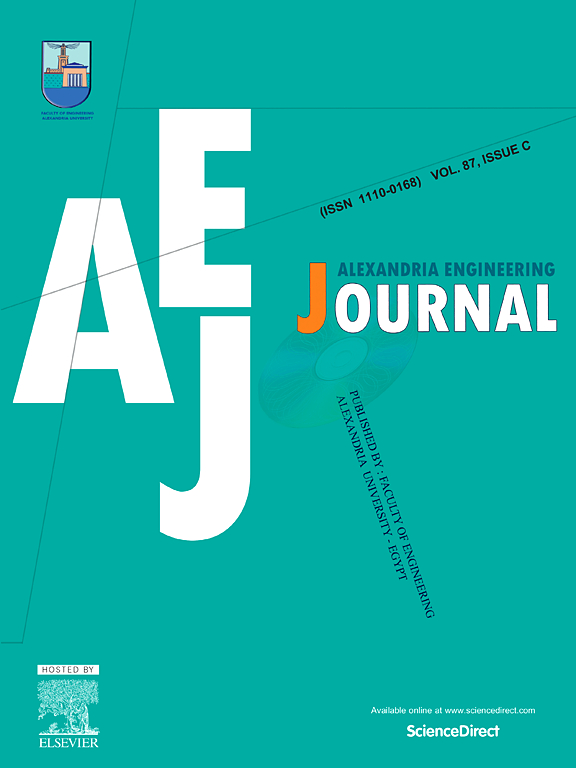微调视觉变压器和YOLOv11用于儿科腺样体肥大的精确检测
IF 6.8
2区 工程技术
Q1 ENGINEERING, MULTIDISCIPLINARY
引用次数: 0
摘要
本研究介绍了一种先进的人工智能驱动框架,用于在侧位鼻咽x线片上自动检测儿童腺样体肥大(AH),利用集成视觉变压器(ViT)和卷积神经网络(CNN)的混合架构ViT-CNN模型。此外,YOLOv11用于腺样体结构的精确分割。该框架结合了微调技术,并在有和没有数据增强的情况下评估性能,以确保对其能力进行全面分析。该研究利用了来自儿科患者的900张侧鼻咽x线片数据集,代表了不同的人口统计学和临床特征。该模型实现了卓越的诊断准确性,具有100%的精度和高的接收器工作特征曲线下面积(ROC-AUC)值,表明区分诊断类别的强大能力。这种水平的准确性表明,在减少诊断错误、改善诊断周转时间和提高临床工作流程效率方面,特别是在儿科护理方面,具有巨大的潜力。与现有的方法不同,这些方法严重依赖于手动地标识别,并且在不同数据集上表现出较差的泛化,该框架确保了精确的分割和鲁棒分类,克服了这些局限性。该框架具有临床相关性,因为它简化了放射工作流程,最大限度地减少了放射科医生的工作量,并提供了可靠的儿童AH自动检测。在取得令人印象深刻的结果的同时,也发现了潜在的挑战,如数据集不平衡和计算需求。未来的工作将集中在合成数据生成和实时优化,以提高框架的临床适用性。本文章由计算机程序翻译,如有差异,请以英文原文为准。
Fine-tuned Vision Transformers and YOLOv11 for precise detection of pediatric Adenoid Hypertrophy
This study introduces an advanced AI-driven framework for the automated detection of pediatric Adenoid Hypertrophy (AH) in lateral nasopharyngeal radiographs, utilizing a hybrid architecture ViT-CNN model that integrates Vision Transformers (ViT) and Convolutional Neural Networks (CNN). Additionally, YOLOv11 was employed for precise segmentation of adenoid structures. The framework incorporates fine-tuning techniques and evaluates performance under conditions with and without data augmentation to ensure a comprehensive analysis of their capabilities. The study utilized a dataset of 900 lateral nasopharyngeal radiographs from pediatric patients, representing diverse demographic and clinical characteristics. The models achieved exceptional diagnostic accuracy, with 100% precision and high Receiver Operating Characteristic Area Under the Curve (ROC-AUC) values, indicating a robust ability to distinguish between diagnostic categories. This level of accuracy suggests significant potential for reducing diagnostic errors, improving diagnostic turnaround times, and enhancing efficiency in clinical workflows, particularly in pediatric care. Unlike existing methods, which rely heavily on manual landmark identification and exhibit poor generalization across varied datasets, this framework ensures precise segmentation and robust classification, overcoming these limitations. The framework is clinically relevant as it streamlines radiological workflows, minimizes the workload for radiologists, and provides reliable automated detection of AH in children. While achieving impressive results, potential challenges such as dataset imbalances and computational demands were identified. Future efforts will focus on synthetic data generation and real-time optimization to enhance the framework’s clinical applicability.
求助全文
通过发布文献求助,成功后即可免费获取论文全文。
去求助
来源期刊

alexandria engineering journal
Engineering-General Engineering
CiteScore
11.20
自引率
4.40%
发文量
1015
审稿时长
43 days
期刊介绍:
Alexandria Engineering Journal is an international journal devoted to publishing high quality papers in the field of engineering and applied science. Alexandria Engineering Journal is cited in the Engineering Information Services (EIS) and the Chemical Abstracts (CA). The papers published in Alexandria Engineering Journal are grouped into five sections, according to the following classification:
• Mechanical, Production, Marine and Textile Engineering
• Electrical Engineering, Computer Science and Nuclear Engineering
• Civil and Architecture Engineering
• Chemical Engineering and Applied Sciences
• Environmental Engineering
 求助内容:
求助内容: 应助结果提醒方式:
应助结果提醒方式:


